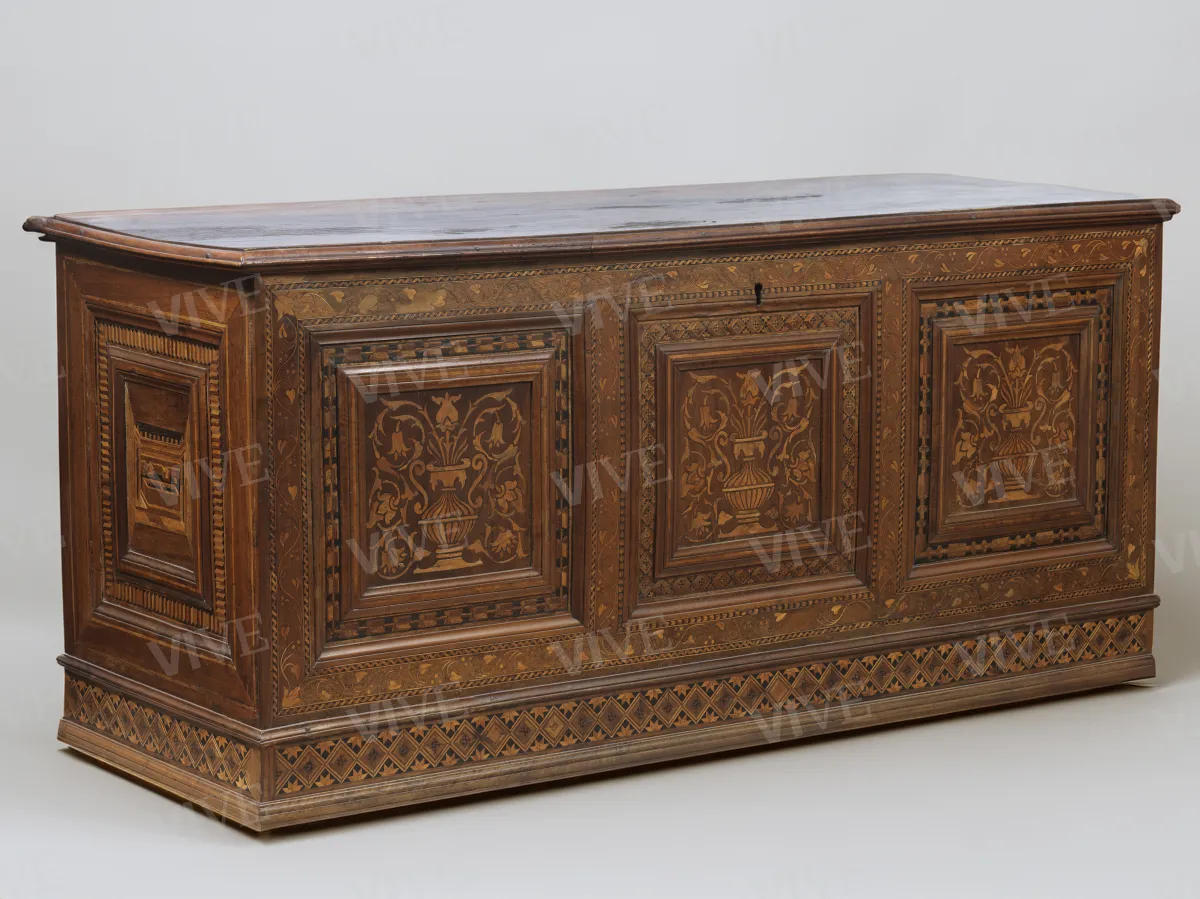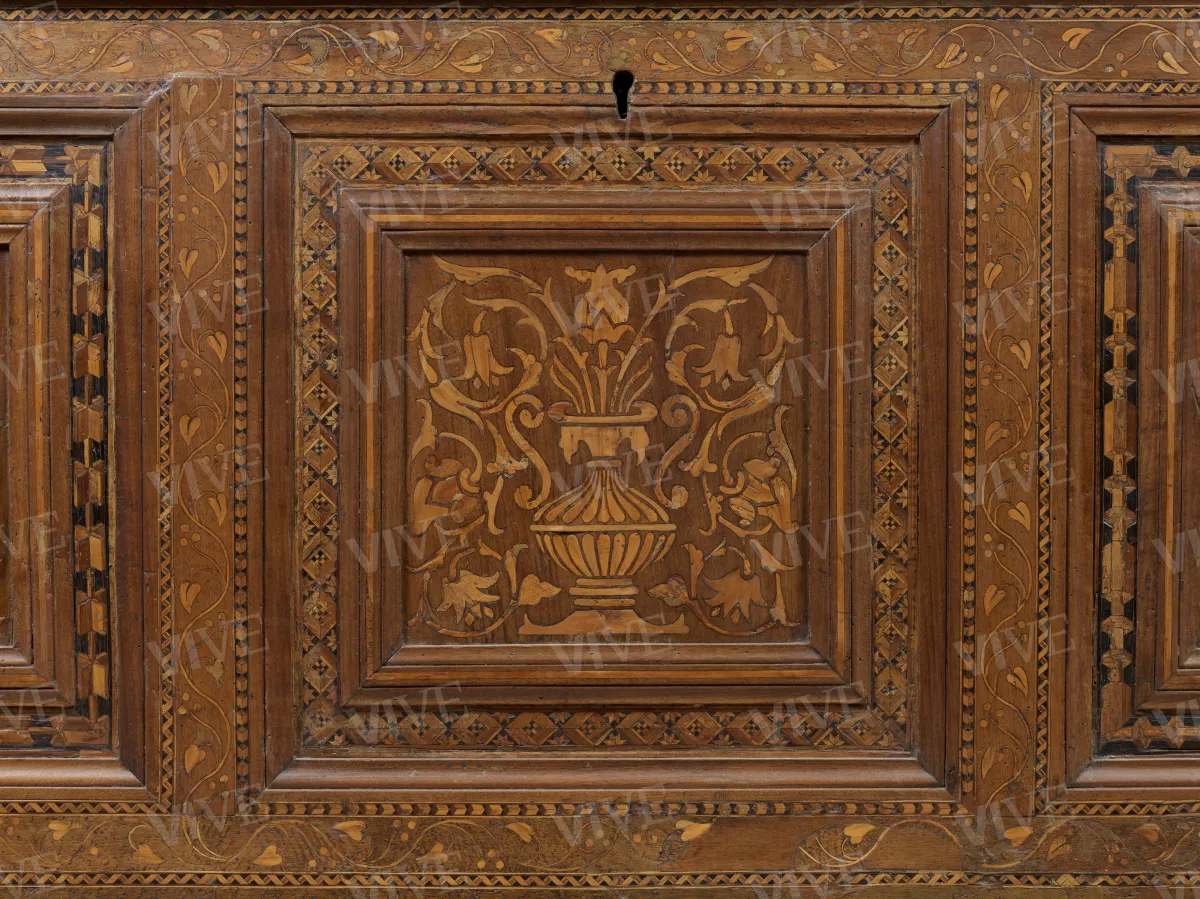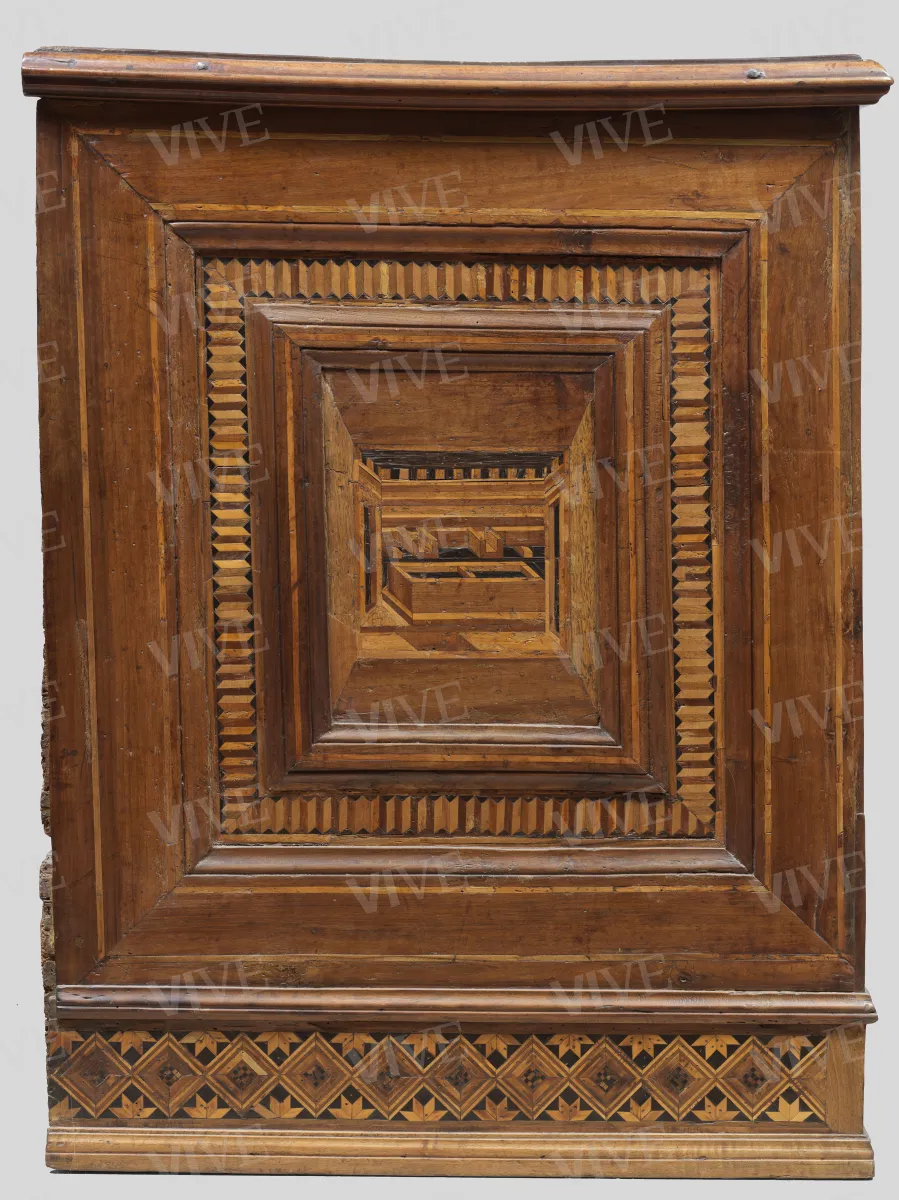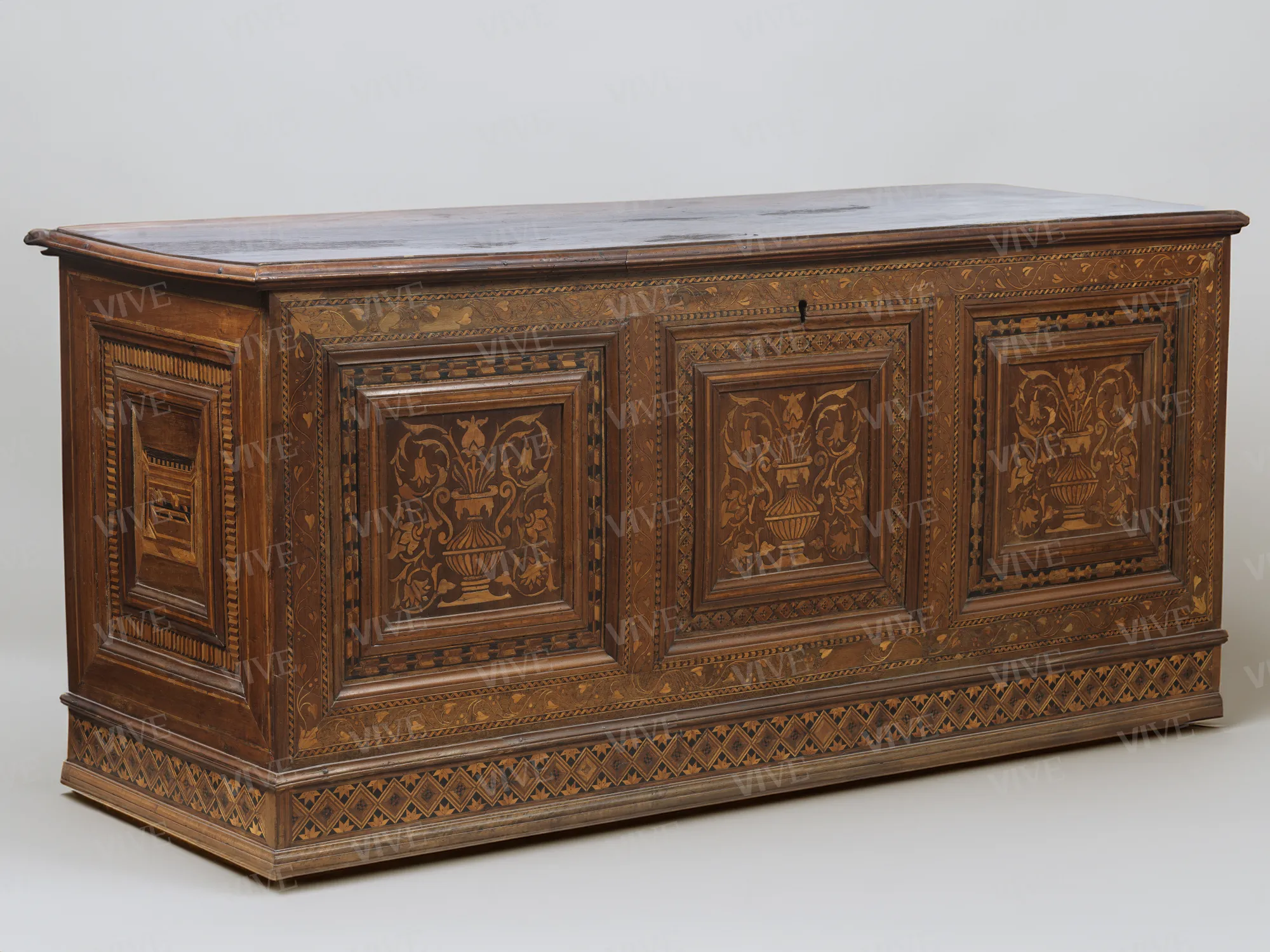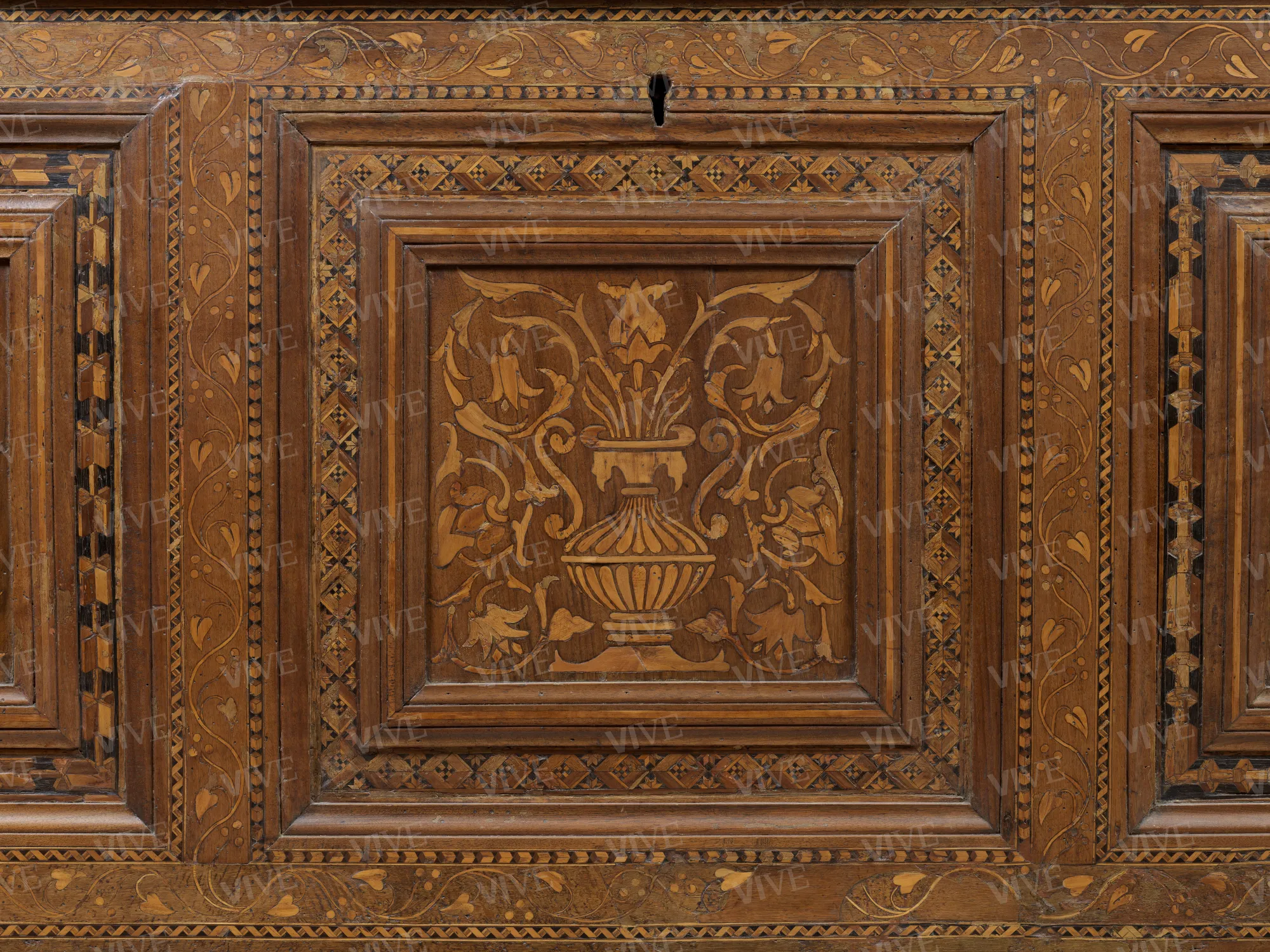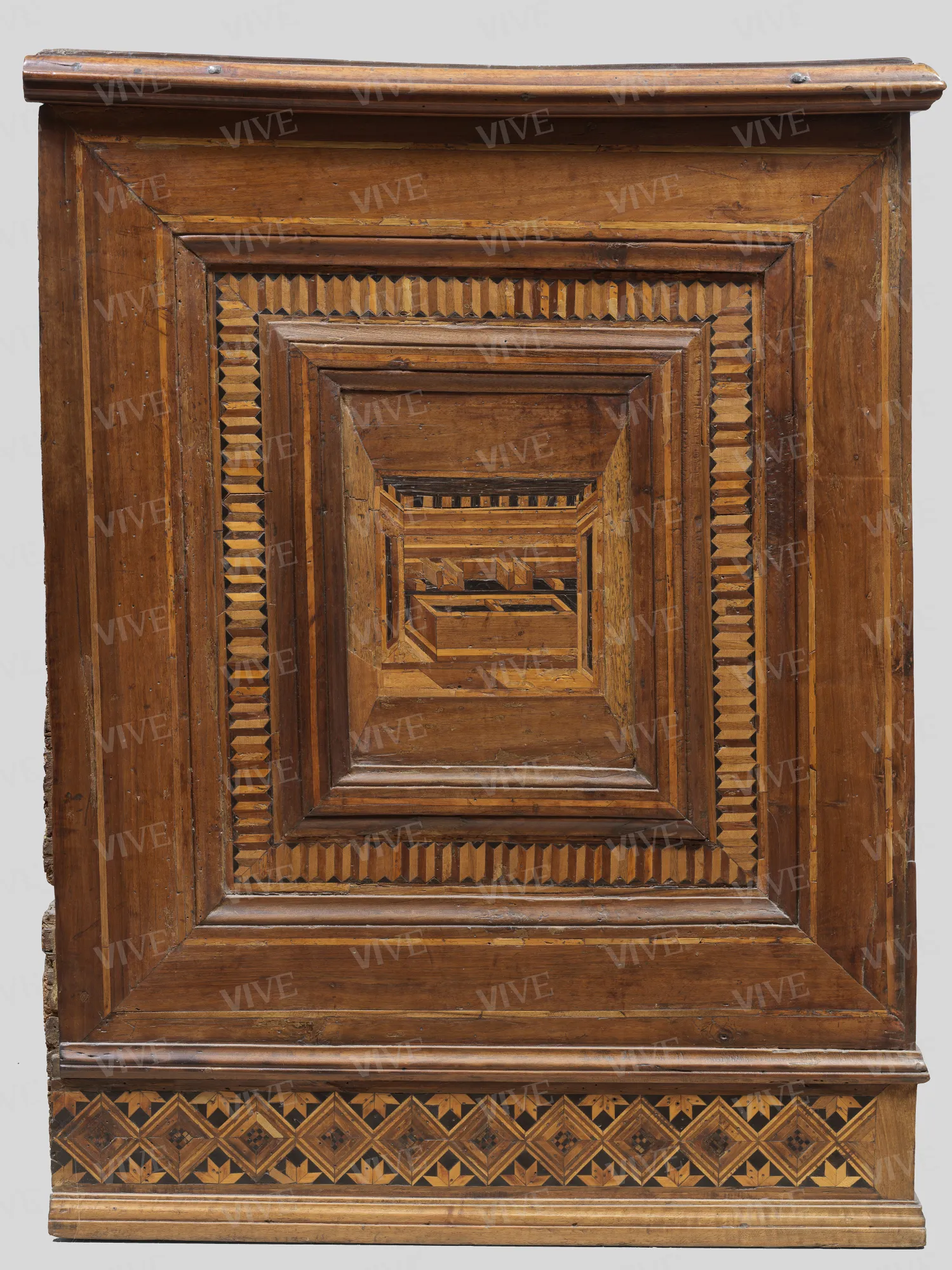Cassone
Northern Italy Second half of 15th century
This item of furniture, positioned in size between a cassone and a credenza, appears to be constructed from multiple sections based on a framework characteristic of northern Italian craftsmanship from the latter half of the fifteenth century.
This item of furniture, positioned in size between a cassone and a credenza, appears to be constructed from multiple sections based on a framework characteristic of northern Italian craftsmanship from the latter half of the fifteenth century.
Details of work
Catalog entry
Apart from the hinged lid, this cassone is inlaid and showcases various traditional intarsia or intarsia motifs, including the “a toppo” technique (using sections of prefabricated bundles of wood) and the “a buio” technique (applying shaped tesserae into recesses of solid wood). Two moldings extend along the entire lower section of the cabinet, forming a base. The central area features lozenges outlined against a dark background with small checkered patterns; four-pointed half-stars occupy the resultant triangular spaces. The front panel is divided into three square sections, or "backs," surrounded by diverse molded strips and frames. The outermost frame encompasses the three squares and aligns with the locking mechanism, bordered by thin friezes with perspective and spiral motifs, enclosing an “a buio” plant motif with leaves, racemes, and small fruits. Each panel has its own narrow frame, decorated “a toppo” in distinct styles: helices (on the left), cubic boxes with a squared background (in the center), and chained polygons (on the right). In the center of these panels, the “a buio” ribbed vases are depicted with flowers and branches symmetrically entwined in volutes. On each side, where the aforementioned base continues, there is a single square panel with an inner frame featuring an accordion motif, and an “a toppo” inlaid molding in the center depicting a perspective space or room surrounded by crenellated walls and containing a two-bowl wash basin.
This piece of furniture, due to its size, is regarded as a transitional example between the cassone and credenza types of chest. It has been attributed to the Tuscan region, particularly Florence, and is dated to between the late fifteenth and early sixteenth centuries (Hermanin 1948; OA report on the work compiled by Fernanda Iacoangeli: Rome, Archivio storico, Museo di Palazzo Venezia). Federico Hermanin identified similarities between the decoration of the panels of the cassone and that of a pane in the wardrobes of the Old Sacristy in San Lorenzo in Florence, which is attributed to Giuliano da Maiano or Francione. The panels feature unembellished vases constructed through the chromatic contrast of light inserts on a dark background, akin to decorative motifs utilized by Florentine masters such as Giuliano da Maiano, as observed in the choir of San Lorenzo in Perugia, a project undertaken by his workshop in collaboration with Domenico del Tasso between 1486 and 1491.
Aside from the three front panels of the cassone in the Museo di Palazzo Venezia, which display Tuscan or Central Italian cultural elements, this cassone originates from northern Italy. This conclusion is supported not only by its structure and general composition but also by specific decorative details, such as the side intarsia with perspective views similar to the work of Marco Cozzi of Vicenza, who employed comparable motifs in the choir at Spilimbergo (1475-1477). It is therefore likely that the piece underwent modifications at some point and was augmented with Tuscan inserts. The cassone reached the Museo Nazionale, Palazzo Venezia as a bequest from Henriette Tower Wurts (1933), the wife of American diplomat George Wurts, in whose collection it had previously been held.
Lorenzo Mascheretti
Entry published on 27 March 2025
State of conservation
Good.
Restorations and analyses
A restoration is documented in 1995.
Provenance
Rome, George Washington Wurts and Henrietta Tower collection;
Rome, Museo Nazionale di Palazzo Venezia, donated by Henrietta Tower Wurts, 1933.
References
Tinti Mario, Il mobile fiorentino, Roma 1928;
Hermanin Federico, Il Palazzo di Venezia, Roma 1948, p. 364;
Steiner Carlo, Del Puglia Raffaella, Mobili ed ambienti italiani dal gotico al floreale, I, Milano 1963, fig. 69.

